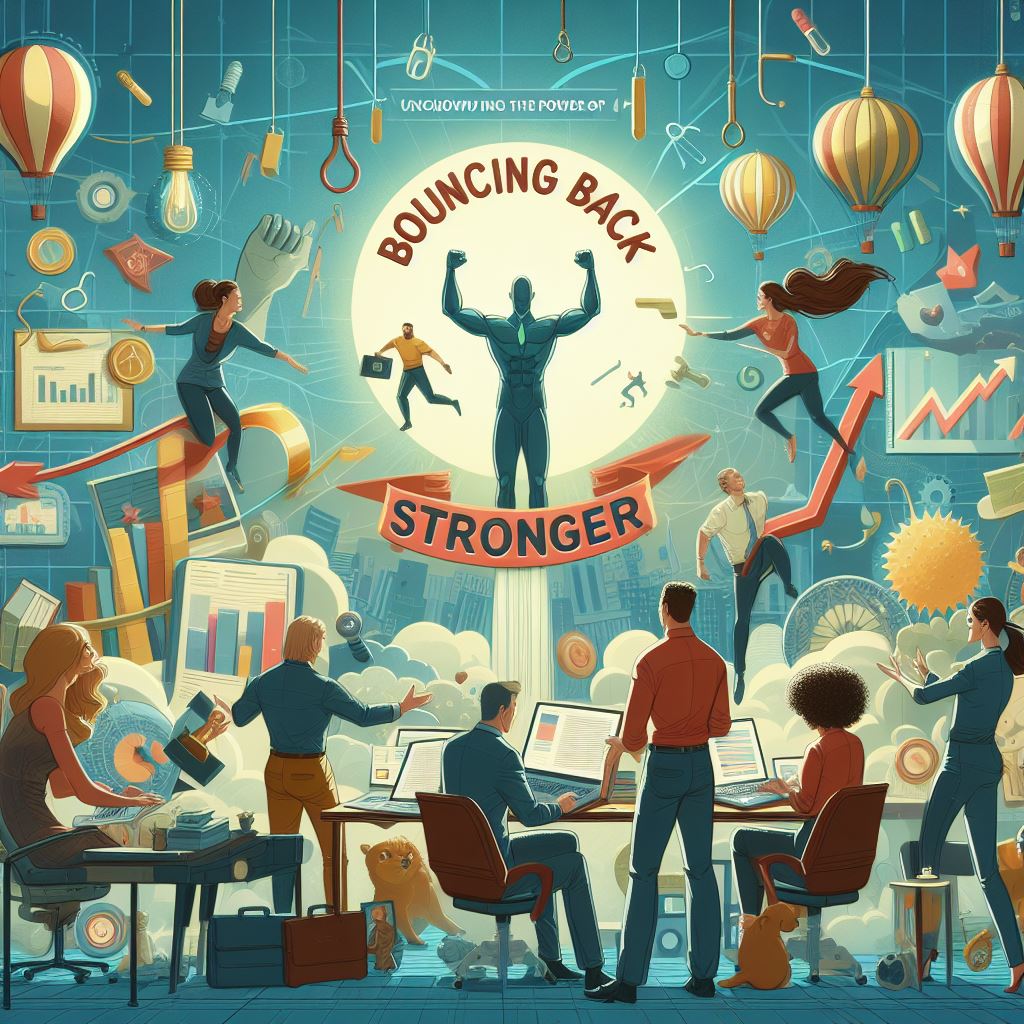Original Article:
Life throws curveballs. That missed promotion, the unexpected layoff, the seemingly insurmountable project deadline – every career and personal journey intersects with challenges. But here’s the good news: amidst the chaos, we each possess an inherent superpower – the ability to bounce back, adapt, and thrive: the power of resilience.
Resilience isn’t simply enduring hardship; it’s about learning, growing, and emerging stronger after the storm. It’s the psychological muscle that helps us not just survive but navigate adversity with grace and, ultimately, succeed. And the beauty lies in its interconnectedness – nurturing your resilience empowers your professional performance, and vice versa.
So, how do we build this invisible armor? The pillars of resilience stand tall:
1. Cultivating a Growth Mindset: Ditch the fixed mindset that sees setbacks as limitations. Embrace challenges as opportunities to learn and evolve. Reframe failures as stepping stones – valuable lessons on your path to success.
2. Weaving a Safety Net of Support: We weren’t built to go it alone. Surround yourself with a supportive network – those who offer a listening ear, a shoulder to cry on, and a healthy dose of encouragement. Foster genuine connections and don’t shy away from seeking help when needed.
3. Prioritizing Your Well-being: You can’t pour from an empty cup. Prioritize healthy habits – nutritious meals, sufficient sleep, regular exercise – these fuel your physical and mental stamina, making you better equipped to handle life’s curveballs.
4. Mastering the Art of Adaptation: Change is inevitable. Stay aware of the current. Hone your adaptability – learn new skills, be open to new perspectives, and embrace the dynamic nature of life. This agility fuels innovation and propels you forward.
Building resilience isn’t a one-time effort; it’s a continuous journey. Mindfulness practices, gratitude exercises, setting healthy boundaries – these everyday actions act like tiny stitches, weaving a powerful tapestry of resilience. Don’t shy away from identifying and addressing unhealthy coping mechanisms, like self-blame or procrastination. Replace them with self-compassion and proactive problem-solving.
Resilience isn’t just individual strength; it’s a catalyst for collective success. Imagine a workplace where teams bounce back from setbacks, learn from failures, and adapt to challenges with unwavering positivity. This is the magic of a resilient culture – a space where individuals thrive, and organizations soar.
So, take a deep breath, dear reader. The storms will come, but within you lies the power to weather them and emerge stronger, wiser, and ready to conquer new horizons. Invest in your resilience – it’s your best career move ever.
Outline:
I. Introduction:
- Hook: Anecdotal opening about encountering a personal or professional setback.
- Thesis: Introduce the concept of personal and professional resilience as the key to navigating challenges and thriving.
II. Defining Resilience:
- Explain the difference between resilience and simply enduring hardship.
- Highlight the dynamic nature of resilience – a learned and continuously practiced skill.
- Emphasize the interconnectedness of personal and professional resilience.
III. Pillars of Resilience:
- Mindset: Positive outlook, growth mindset, self-compassion, mental agility.
- Relationships: Strong social support network, active listening, effective communication.
- Self-care: Prioritizing physical and mental well-being, healthy habits, and stress management.
- Adaptability: Embracing change, seeking solutions, willingness to learn and pivot.
IV. Building Resilience:
- Practical strategies for each pillar: mindfulness exercises, gratitude practices, building trust, setting healthy boundaries, etc.
- Importance of identifying personal strengths and leveraging them for support.
- Recognizing and addressing negative coping mechanisms.
V. The Resilient Professional:
- Showcase real-life examples of resilience in action within diverse professional settings.
- Benefits of resilience for individual growth, collaboration, and organizational success.
- Cultivating a culture of resilience within teams and workplaces.
VI. Conclusion:
- Recap the importance of personal and professional resilience for navigating life’s challenges.
- Empowering call to action – encourage readers to start investing in their resilience.










